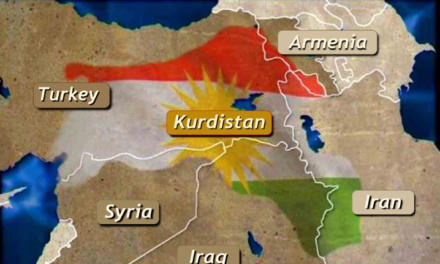by Michael Knights/ The Washington Institute
The Gulf states were right about the Houthi threat and the West was wrong, so another large-scale confrontation is inevitable.
On September 21, 2014, Houthi fighters in Yemen—formally known as the Ansar Allah movement—overran the capital, Sanaa, and became the de facto rulers of most of Yemen’s population. The state television broadcaster’s staff announced the takeover from a building that was shaking from being struck by Houthi gunfire. It was a classic coup, aided by the ousted former president Ali Abdullah Saleh, who was eventually murdered by his Houthi partners a few years later.
The September 21, 2014 takeover was the act that confirmed to the international community that the Houthis were no longer a ragtag mountain insurgency that could be safely ignored. The lesson was arguably learned too slowly, for the Houthis had been on the march towards power for three years at that stage.
Ever since the Houthis’ first direct fight with Saudi Arabia on their shared border in 2010, Iran had paid them much more attention, stationing a spy ship off the Houthi-controlled coast and sending advisers, money and large shipments of advanced weapons into the sole Houthi-held port of Midi from 2010 onwards. It is clear, in retrospect, that Tehran sought to aid the Houthis in becoming a “southern Hezbollah” from 2011 onwards, exploiting the chaos in Yemen wrought by the Arab Uprisings and the failure to replace Mr Saleh’s government with something more durable.
What have the past 10 years of Houthi occupation of Yemen’s populous north taught us? First, that prevention is always infinitely cheaper than the cure when it comes to violent extremists taking over countries. Removing the Houthis from power will now require a new multi-year, or even multi-decade effort, including a probable return to war inside Yemen.
For now, no-one is ready for this eventuality—but such a war is steadily coming closer. One day the Houthis will ask for something that none of the regional states will accept—such as carte blanche to overrun Yemen’s oil and gas fields in Marib, or un-monitored air and maritime connections to Iran. The Houthis have learned that if they threaten, they win, but eventually neighbouring states will have to call their bluff, and the Houthis rarely bluff when it comes to war. There will be a clash of wills.
The tragedy of Yemen—as I once wrote in this paper—is that the UAE-led forces in Yemen had done most of the hard work to push the Houthis away from the Red Sea coast. An opportunity existed just four years into Houthi rule to cut the new southern Hezbollah off from Iran—and not one US soldier, sailor or airman needed to lift a finger to make that happen. All the US had to do was stay out of the way. But that didn’t happen, and instead the US, UK and UN created the December 2018 Stockholm Agreement that effectively gave the Red Sea coast back to the Houthis. Many of the areas from which the Houthis today launch their most effective attacks on global shipping were under UAE-Yemeni control in 2018, before the Stockholm disaster.
Today the US is deservedly reaping what it sowed in the Red Sea. In June, the Houthis chased a US aircraft carrier, the USS Eisenhower, out of the Red Sea with a flurry of anti-ship ballistic missiles, and the world watched and took note. Today the Houthis undertake far fewer attacks than they did earlier this summer (a dozen in August versus more than 40 in June), but these attacks are much more sophisticated because the international naval presence in the Red Sea is so thin and thus the Houthis can combine surveillance vessels, explosive unmanned boats, drones and anti-ship missiles at their leisure.
The lesson for the US is clear: don’t complain about allies doing more to assure their own security, and then blame them when they do exactly what you wanted. The US must either provide security or stay out of the way while regional states do it themselves.
For the Houthis, the past 10 years have been a period of unparalleled growth, especially the last year since the October 7 attacks on Israel and the subsequent war. In 2011, the Houthis could barely fire a Katyusha unguided rocket at a target 15 km away; by 2015 they were firing ballistic missiles at Riyadh at ranges of more than a thousand kilometres, a transformation that only occurred due to Iranian and Hezbollah technical assistance.
The Houthis have vaulted to the front rank of Iran’s Axis of Resistance, showing more fearlessness than any other actor—even Iran itself. Of all Iran’s partners, it was the Houthis who were the first to fire a medium-range ballistic missile at Israel in November last year—an act that Iran itself had not dared to do by that stage, after more than 40 years of opposing Israel. The Houthis used this capability almost the moment they had it: missiles capable of reaching Israel were first unveiled at the ninth anniversary of the Houthi takeover, this time last year. Just weeks later they were arcing towards Israel.
This year, it was the Houthis, not Iran, that then took a shot at a US aircraft carrier and missed by a margin that is unknown but was certainly too close for comfort. When Yemen’s internationally recognised government started to successfully turn the screws of sanctions on the Houthi economy, all the Houthis needed to do was threaten to fire missiles at strategic allies and suddenly the pressure on the Houthis was lifted by the Yemeni government.
For me, the most important viewpoint on this dark anniversary is that of a Yemeni child who has now grown up under the Houthis. If they were five years old when the Houthis took over, they are 15 today. A 15-year-old boy is viewed by the Houthis as a military resource, for the militants are one of the most prolific exploiters of child soldiers in the world.
Hezbollah taught the Houthis how to mould the boy’s brain from his earliest days; in summer camps, with school-house indoctrination, at parades, and with an unending barrage of propaganda. The boy believes that the Gulf states, the Americans, the Israelis and Al Qaeda are all constantly working together to destroy Yemen. The boy is now one of millions of young, poor Yemenis who have been rendered into a number that is part of a Hezbollah– and Iranian-provided human resources system, whereby every military-age male is catalogued for mobilisation as young as 14.
This shocking reality is happening on the same Arabian Peninsula that many readers of this paper are living in today. A Houthi Jihad Council, modelled on similar councils in Iran and Lebanon, is today actively involved in assessing how the movement can expand within the Arabian Peninsula, with a nefarious and historic objective of seizing lands up to and including Makkah and Madinah.
There must be a renewed push for regional Arab states to work together to reduce the Houthi threat in Yemen, and for the US, UK and Europe to fully support this effort. The Houthis will inevitably draw war to the Arabian Peninsula—involving America and global shippers, involving Israel carrying out the same kind of bombardment that currently pummels Lebanon, and eventually involving the states of the Arabian Peninsula too.
Engagement with the Houthis is wise, not least to calm them at this volatile stage, but toughness and isolation will be necessary too one day—and very likely before the 20th anniversary of the Houthi takeover, if there is one. The formula initially pursued by the Gulf states—to cut the Houthis off from Iran—must be reinvigorated because it is undeniable today that the Gulf states were right about the Houthi threat and the West was wrong.
Michael Knights is the Bernstein Senior Fellow at The Washington Institute and co-creator of its Militia Spotlight platform. This article was originally published on The National website.





